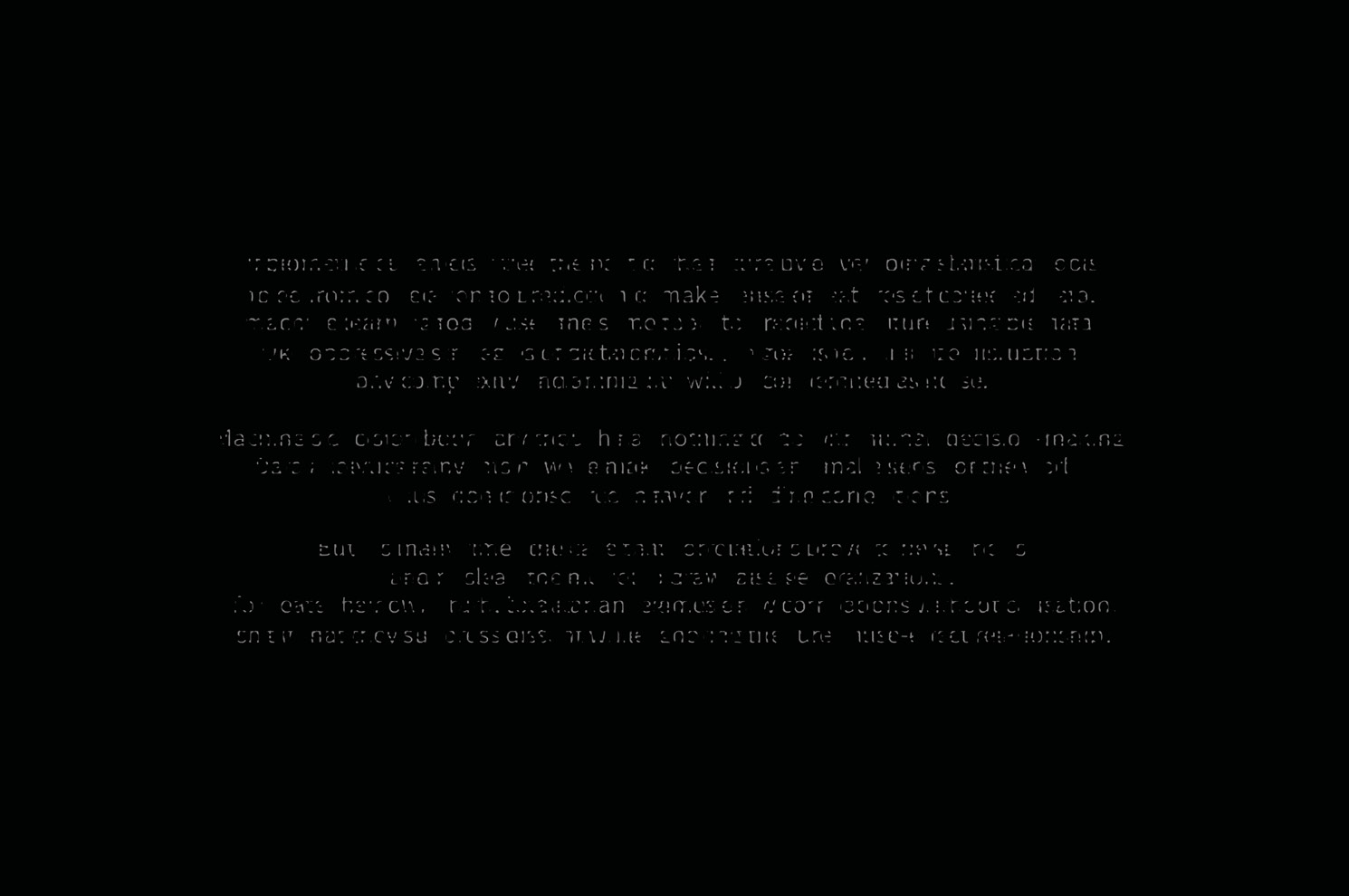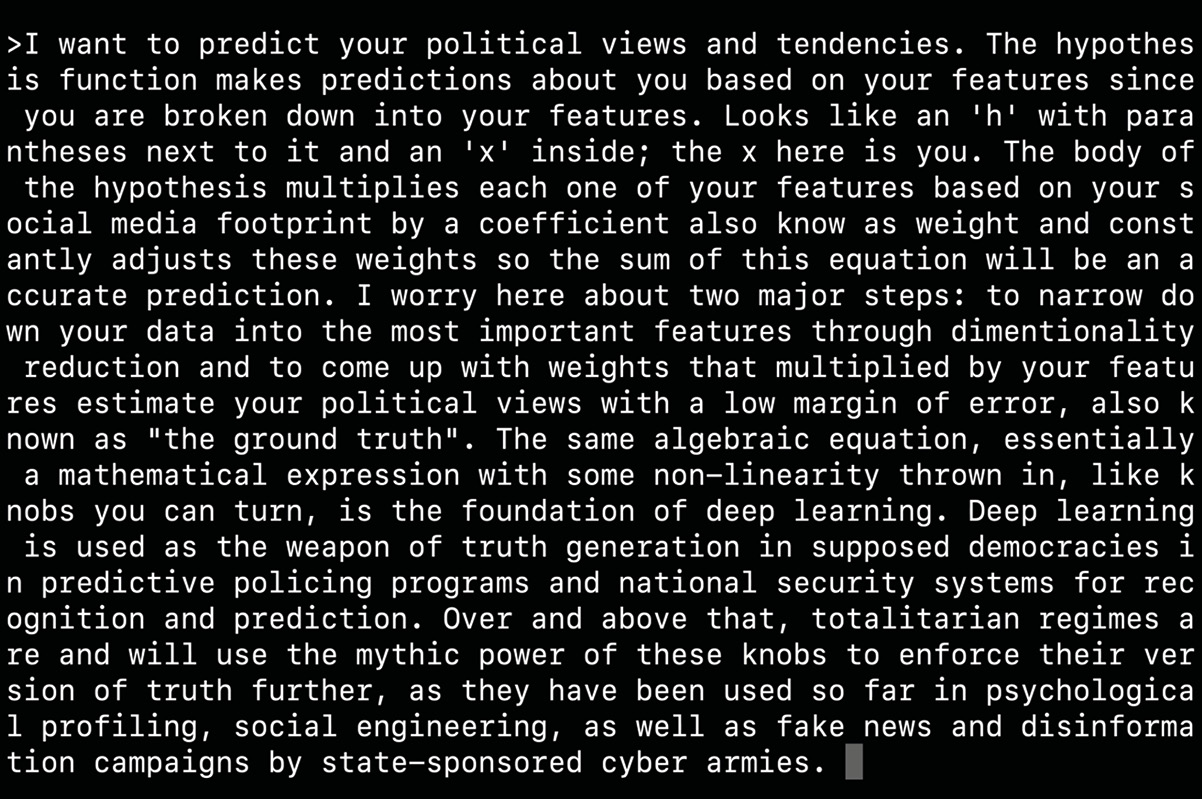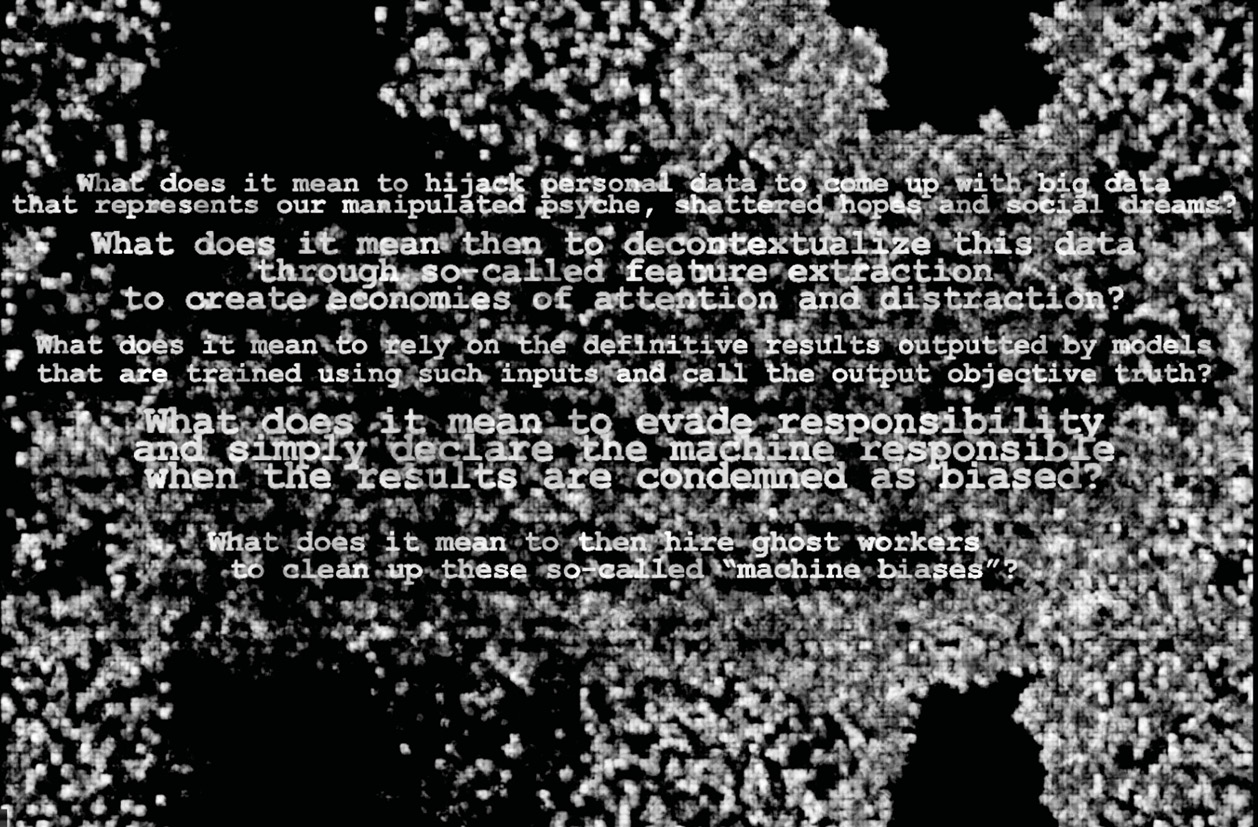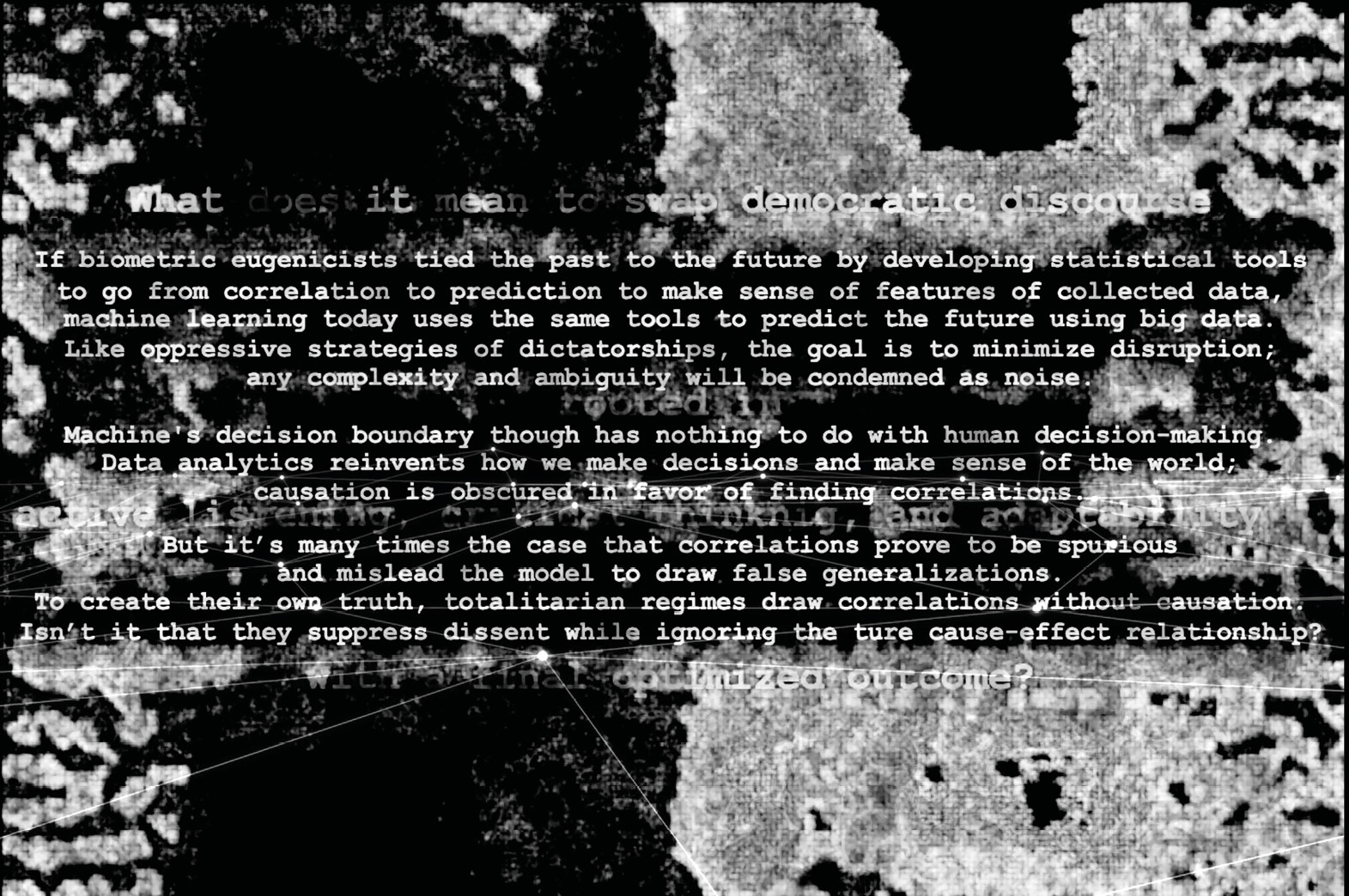Dit artikel verscheen in FORUM+ vol. 31 nr. 1, pp. 24-29

For the past two years I have been collecting neurophysiological data from my own body using biosensors and audio recordings towards building performances. In the last iteration of these experiments, I have integrated the sensor data and audio recording of my breathing patterns towards an acoustic performance for communicating my complex affective states as a migrant in exile. This time, I had a longitudinal library of data to work with.
Since I work within the space of art-science-technology, I was quick to think of machine learning. As a statistical method to make sense of data that has taken the world by storm, within hard sciences machine learning is known to be able to draw “objective” probabilities from data. Think of it as a temporal-management technology that can make sense of millions of “data points” by multi-steps compressions and transformations for predictive analysis.
Data I captured while exposing myself to documentation videos of the ongoing socio-political oppression, which was precisely one of the main reasons for my migration. Once data collection was over, I found myself struggling to make sense of the datasets that I meant to transform into an acoustic performance. The one with audio recordings of my breathing patterns was the most confusing. Do I allow myself to just pick whatever I “like” out of the dataset? Do I pick the gasping for air? The sighing? The sniffling? Mundane moments of regular breathing? Do I combine the intense and the mundane together? If yes, at what ratio?
The results I got, however, were underwhelming. The machine output was banal, toned down, and stripped of the nuances and complexities in the data. There were no gasps, sniffles, or changes detected in the breathing rhythms. The algorithm got rid of all those as “outliers” and gave me a “mean” image of data. So, I finally did what I was weary of: to offset the bland machine output, I picked what it didn’t take into account and designed my sound based on both decisions, mine and the machine’s.
This predicament made me research more and more about machine learning, not its technical operation but its history of development and the critique of its deployment in social settings en masse. Of how it can be a totalizing tool for decision making. I became obsessed with the idea of correlation as the learning strategy of machines to make predictions. I started drawing correlations myself... human-scale correlations that is: between machine operation and modus operandi of totalitarian regimes.


To address Ars Electronica’s 2023 prompt “Who Owns the Truth?” I then developed my thoughts and findings into generative images to show why the context in which machine learning operates is important, correlating absolute concentration of political power with the authority given to machine’s decision making. In the lecture-performance Breathless I juxtaposed these generative images with the sound I designed, arranged here as stills. These evolving images act as an actionable critique towards the integration of machine learning in every aspect of life and nonlife.

This contribution draws on research supported by the Social Sciences and Humanities Research Council. Ideas posed in this spread are derived from Wendy Hui Kyong Chun's book Discriminating Data (2021).
To view the printed spread, click here.
+++
Mona Hedayati
is an artist-researcher and a joint PhD candidate in the interdisciplinary humanities at Concordia University, Canada; and artistic research at Antwerp Research Institute for the Arts, Belgium. Her work draws on computation arts and sensory anthropology. She has a BA in translation studies, an MFA in digital media, and an MRes in social-political art and design. Hedayati's research practice encompasses the interdisciplinary field of science, technology, and society (STS) to bring the social thickness back into the science and technology practices that are conventionally considered immune to social concerns. Given the hybrid nature of her work that hovers across disciplines, Hedayati has presented her scholarly and artistic work internationally across a wide array of platforms as diverse as Kunsthal Extra City, Antwerp; Body Electric Retrospective, Toronto; ISEA, Paris; xCoAx, Weimar; RE:SOURCE, Venice; ARTECH, Faro; and Les traversée du Marais Festival, Paris. As an educator, Hedayati teaches courses at master's and advanced master's level on digital culture and critical theory.
